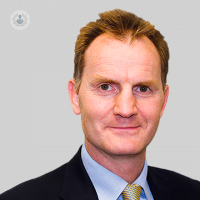Lens replacement surgery: a solution for bad eyesight
Written by:Short-sightedness (myopia) and long-sightedness (hyperopia) are two of the most common issues related to eyesight. LaserVision co-founder and consultant ophthalmologist, Mr Michael Tappin, gives us the lowdown on one of the world's most frequently performed surgical procedures that treats these conditions.

Why do people choose lens replacement surgery?
LASIK (laser eye surgery) has been the most common procedure used for correcting long and short sight for quite some time. In the past few years however, lens replacement surgery (refractive lens exchange) has become the most popular vision correction technique for people over 45 years of age. It uses bespoke lenses to correct long or short sight and astigmatism, whilst also removing or preventing future development of cataracts.
What does lens replacement surgery involve?
The surgery replaces the natural lens in the eye with a new artificial lens tailored to the individual. This restores vision which remains stable over the long-term and these lenses don’t wear out. Compared to laser eye surgery, lens implants can correct a much larger range of long sight, short sight and astigmatism.
What different type of lenses are available for lens replacement surgery?
There are several styles of artificial lens, also known as intraocular lens, available to correct vision. For patients, sometimes choosing the lens system to best suit their needs can be a challenge so having an understanding of the choices before attending a consultation is useful.
The most common lens used is a single focus lens. This corrects vision in one area, usually distance, leaving patients to use glasses for reading. A variation known as blended or monovision uses a distance vision in the dominant eye and a slightly nearer focus in the non-dominant eye. This provides a greater depth of focus from reading to distance, reducing the need for near and distance glasses.
There are several types of multifocal lenses. The design I most frequently use now is the trifocal lens as these provide the greatest degree of spectacle independence. These are designed with three focal distances to provide vision from distance, intermediate and near.
How can lens replacement surgery benefit your patients?
Ultimately, lens replacement surgery greatly improves eyesight which of course offers many benefits in day to day life. However, an essential part of my consultations to ensure patients are completely satisfied is to find out their individual requirements and expectations to help decide which lens system is the most appropriate for each patient and their preferred lifestyle.
If you’re struggling with bad eyesight, we recommend seeing a specialist such as Mr Michael Tappin who will be able to further advise, diagnose and indicate the best form of treatment for your specific case.


